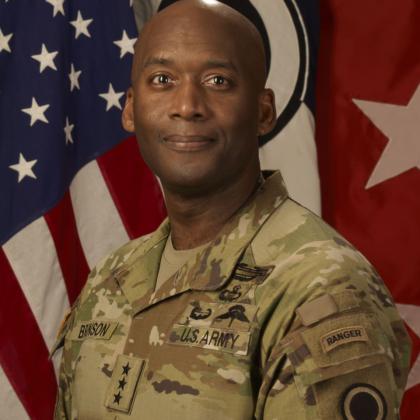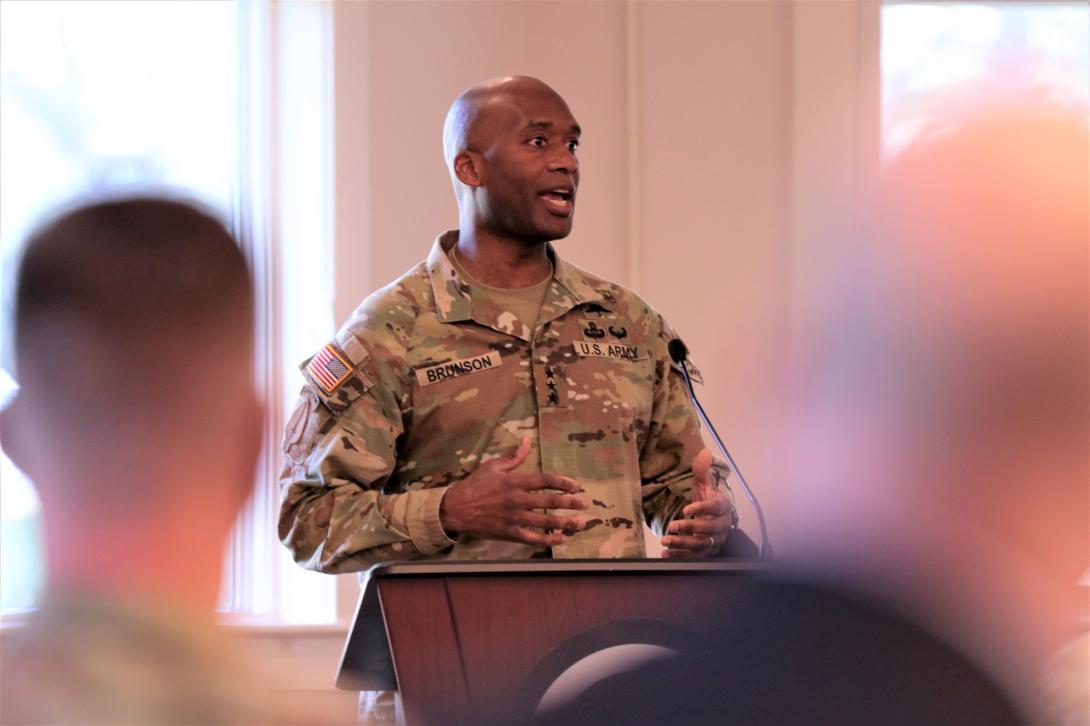Indo-Pacific Operations for the Army Are Challenging but Necessary
Preparing to meet growing threats in the Indo-Pacific region, the U.S. Army is examining a construct to deploy smaller groups of soldiers and technologies throughout the enormous warfighting area. The idea is a shift from how the service conducted operations 21 years prior in the Middle East, explained Lt. Gen. Xavier Brunson, I Corps commanding general.
I Corps, which is deployed out of Joint Base Lewis-McChord, Washington, is responsible for supporting the U.S. Indo-Pacific Command theater. As commander since last October, Gen. Brunson is working to integrate cyber warfighting as well as other capabilities into multidomain operations in the Pacific—in order for I Corps to excel as a power projection platform for the Army and the greater military.
Having had six deployments to Iraq and Afghanistan, Gen. Brunson understands firsthand how previous operational premises will no longer work in Southeast Asia. On top of the pressure of conducting "no fail" missions in the Indo-Pacific, the Army faces a complex threat from an “incrementally insidious" adversary.
“The fixed command post we spent 20 years fighting within the Middle East is no longer feasible for a variety of factors, which range from various levels of infrastructure, host nation capabilities, to unpredictable weather patterns.”
As such, technology and operational constructs must shift, including the move to a new breed of communications support.
“We the consumer, need a robust, reliable and resilient network,” Gen. Brunson said, speaking Wednesday at AFCEA International’s TechNet Augusta conference in Georgia.
I Corps is one of several subordinate commands—such as the Eighth Army, U.S. Army Alaska, U.S. Army Japan and other commands—that support the Army’s largest service component command, U.S. Army Pacific (USARPAC), headquartered at Fort Shafter, Hawaii with parts of the command forward-deployed and based throughout the region, according to USARPAC.
The Indo-Pacific Region is an extremely vast area for @I_Corps to operate in, and we need a unified network that support us in a contested environment, says @Bayonet6X Lt. Gen. Xavier Brunson @USArmy #AFCEATechNet (on left). Photo: US Army War College Public Affairs Elena Patton pic.twitter.com/RsU99x29gh
— Kimberly Underwood (@Kunderwood_SGNL) August 17, 2022
“The region itself contains 36 nations and at least four of the most populated countries, and four of the largest economies in the world,” Gen. Brunson explained. “As a commander of I Corps, much of my strategy is focused on being ready and operating in active competition with nation states…. In the Indo-Pacific region, synchronizing forces become more complex because we operate in a vast maritime environment across multiple contested domains to include cyber, electronic warfare (EW) and spectrum. Dominance in SIGINT [signals intelligence] is no longer on a conclusion. Every domain is a battlespace, even the sanctuary of the homeland.”
Such distributed operations will all be enabled by a unified network, a comprehensive effort of which big Army is undertaking.
“When I ask myself how do we contribute to the [operations in the region], across Japan, down to the Philippines, to Indonesia, our [soldiers] need solutions that match the reality of their environment.”
In particular, to provide options for the U.S. military, forward-deployed soldiers in the Indo-Pacific region require “purpose-built command and control with [tailored] capabilities that allow us to operate as small defined groups, built into a connection with Joint Force Headquarters,” Gen. Brunson suggested. “Given this, we can operate as the tactical land component as a joint force or task force. We can also operate with partner nations for forming a combined task force with a host of missions.”

The fixed command post we spent 20 years fighting within the Middle East is no longer feasible for a variety of factors, which range from various levels of infrastructure, host nation capabilities, to unpredictable weather patterns.
The I Corps Commander has in mind a new iteration of command and control empowering these adroit operations. “The distributed, survivable, agile, resilient application of warfighting command and control capabilities of I Corps in the Indo-Pacific is a requirement,” he emphasized. “I Corps needs to be able to fight free, if you will,” with nodes, or small groups of soldiers with specific technologies, with a shared understanding of the operational environment, and the nodes are empowered to make decisions.
This type of distributed mission command would uniquely support I Corps as it operates in the Indo-Pacific region for about 8-10 months out of every year.
“In the course of steady-state operations, this places us in a posture to respond to any [challenge or crises],” Gen. Brunson continued. “We must be presented with the basic command and control networks for the U.S. Army. We do have multidomain environment capabilities that exist today [but] distribution at the corps level is necessary for any distributed operations to be successful.”
Gen. Brunson did have conditions for the distributed mission command design, starting with the need of low probability of intercept and detection capabilities. “Since these command posts must operate under continuous surveillance, the signature we emit must be continuously monitored and modified to remain below the threshold of detection,” he stipulated.
The service has to be strategic about where it deploys these smaller bands of soldiers, with each node purpose-built, and the size of the unit tailored to the specific mission, with as few as 3-5 soldiers, the commanding general said.
In addition, all units must be connected by theater architecture and be fully interoperable with joint partners, joint fires, intelligence, surveillance, reconnaissance and integration of battlefield C2, to support commanders’ decision making to “enable our nodes to fight freely,” Gen. Brunson said. “I am certain that this distributed operational approach will improve our speed of decision making and improve our execution. It will improve our access to data….as commanders will see first, understand first and decide first.
“And with this approach, we could have multiple command nodes from the continental United States all the way to the first island chain,” he added.





Comments